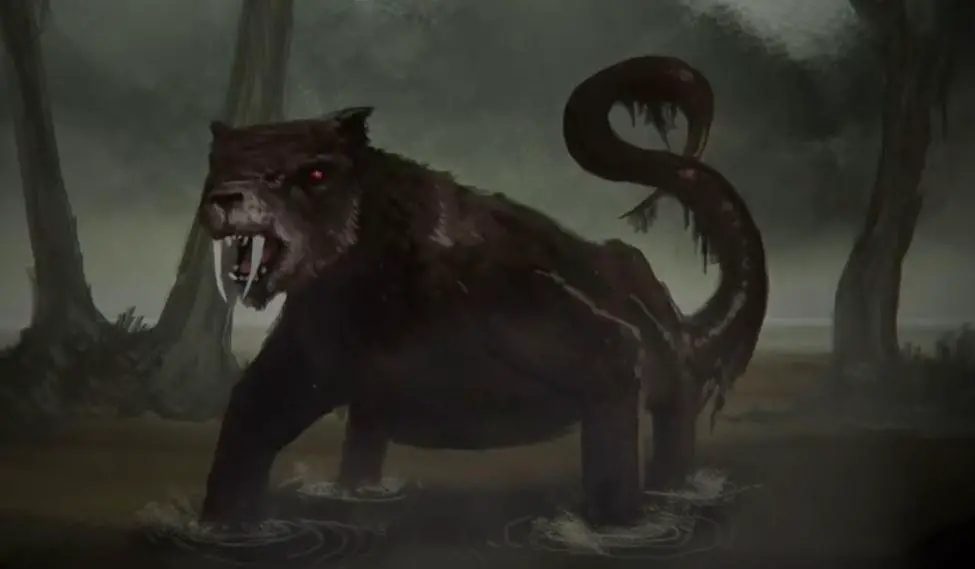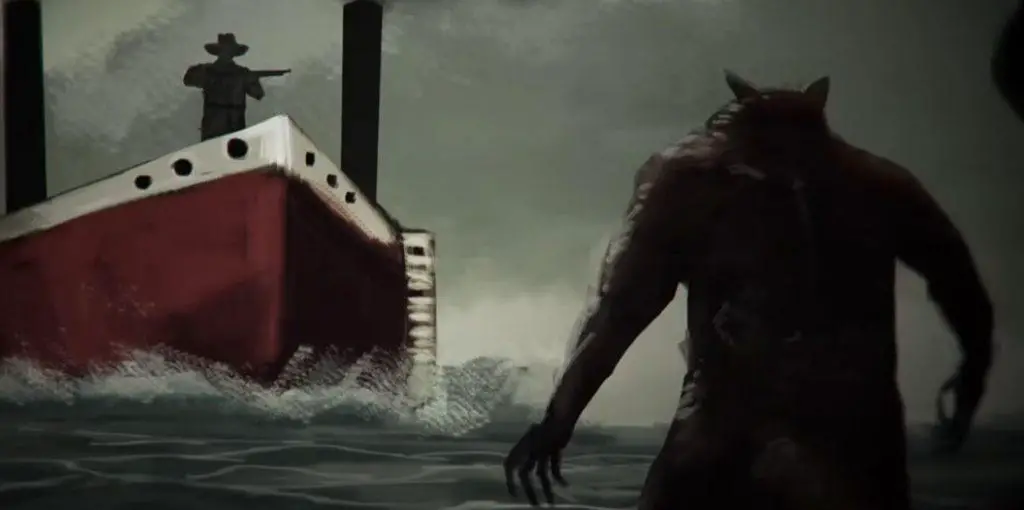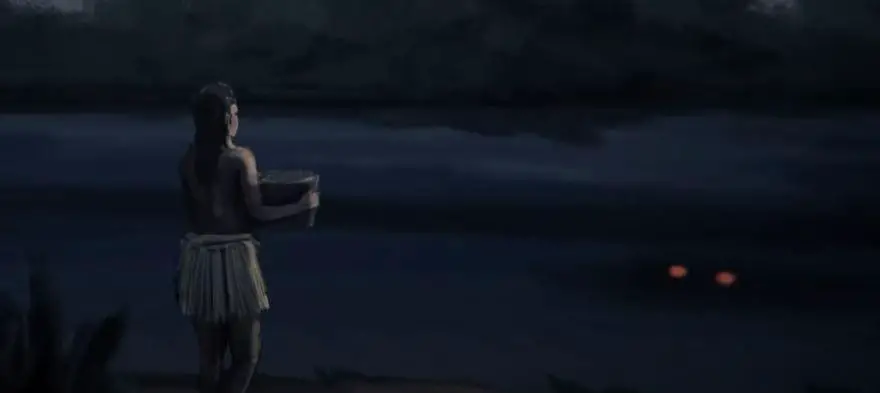Share the Lore!
By: Alex Postrado
Muldjewangk: Part-Man, Part-Fish Monster That Stalks The Murray River
Apart from other strange creatures of the deep, water mythology and lore would not be complete without the mention of merfolks.
They exist in just about every body of folklore.
Celtic and Norse mythology have selkies. Slavic folklore sometimes considers rusalki to be mermaids. And even in Asia, merfolks appear in the form of the Japanese ningyo and Philippine mythology’s Kataw.
In a world saturated with stories about merfolks and other water creatures, there is always a lot more to name.
But have you heard of the Muldjewangk 一 Aboriginal Australian mythology’s merman-resembling water monster?
The Murray River Bunyip: The Muldjewangk
To the Ngarrindjeri people 一 the traditional Aboriginal Australians that reside by the lower Murray River 一 there is no known creature more terrifying than the Muldjewangk.
Could also be written as muldewangk, mulgewongk, mulyawonk, multyewanki, and moolgewanke 一 this reputedly “ugly-looking monster” is often considered the Murray River’s Bunyip.
If you do not know what the Bunyip is, here is a quick wrap-up:

It is an amphibious monster 一 of varying physical description 一 that, according to the myths, stalks the inland waters of Australia in search of prey.
And with that sentence alone, one can easily picture what the lore of the Muldjewangk would be about.
It is said that in the Murray River of South Australia dwells a gargantuan merman-like creature 一 peculiarly, with a pair of enormous, scaled arms.
Believed to be strong enough to disrupt large ships and pull them “down into the murky depths” 一 the Muldjewangk’s distinct arms are likely what got it its reputation of being vicious and deadly.
Although, admittedly, vicious and deadly not in the way that the Bunyip is infamous of!
Aggressive as the Muldjewangk may be, it is unclear whether or not it has a taste for humans, unlike the Australian Bunyip.
All that we know is that it takes out its victims by dragging their riverboats down the waters, consequently drowning them. And oh 一 one more thing!
It can also kill by cursing a person into dying a painful death.
The Legend of the Muldjewangk
Among all stories centered on the Muldjewangk, one account steals the spotlight.
It tells of the Muldjewangk’s attack on a European-owned steamboat that supposedly carried both settlers and a few Aboriginal elders.
As the legend goes, the captain saw the Muldjewangk’s giant pair of hands “grasping the hull of the boat,” trying to drag the ship into the depths.
Upon seeing it, he quickly grabbed his gun and aimed it at the Muldjewangk’s arms.
But the Aboriginal elders begged him to stop. They believed that incurring the wrath of the Muldjewangk would ultimately lead to tragic consequences.

Regardless of their warnings, though, the captain still fired his gun.
And he continued to shoot the Muldjewangk until it eventually released its grip on the boat and disappeared into the waters.
A happy ending… if only the elders were wrong about getting on the Muldjewangk’s bad side.
Apparently, while every other passenger of the boat survived the encounter, the captain soon fell inexplicably ill.
Strange, red blisters appeared all over his body and within six, agonizing months, he finally died.
Inconsistencies in the Lore
If there is one thing to know about the Muldjewangk’s lore, it is that, after centuries of European and other foreign influences, most of its details are now either lost, vague, or often contradicting.
For one, we are not even sure if the stories were referring to a singular creature, called Muldjewangk, or if they were talking about a mythical species.
If it is the latter, then there would 一 theoretically 一 be multiple muldjewangks out in the waters of the Murray River.
But there is little evidence to back either of these claims.
Moreover, even the size of the Muldjewangk is confused by many.
Was the monster a man-sized water entity, with the lower half of a fish and a pair of massive arms? Or was the Muldjewangk 一 in fact 一 a colossal water nightmare?
Finally, others believe that supposed mysterious footprints found around the area are that of the Muldjewangk.
And so, diverting from the original folklore, some elders now argue that the Muldjewangk may “no longer inhabit the river system.”
Or that, if it still does, it has likely always had the ability to walk on land 一 again, similar to the amphibious Bunyip.
The Muldjewangk’s Origins
While details of the Muldjewangk’s lore are commonly at odds with each other, the creature’s mythological origin story is 一 fortunately 一 something that the Ngarrindjeri people see eye to eye.
According to it, back in the distant past, there was a Ngarrindjeri man who was far too greedy and selfish that the Elders “were not happy” about him.
However, this man 一 whose name was not mentioned in the story 一 finally went too far when, one day, he caught “far too many fish than he needed to” 一 disrespecting the laws of fishing that the Ngarrindjeri people followed.

And as a result of his actions, the Elders decided to punish him 一 turning him into the Muldjewangk and banishing him into the depths of the Murray River for all of eternity.
This creation myth of the Muldjewangk was passed down generation after generation as a warning for the Ngarrindjeri children to never act in greed or take too many fish… otherwise, the Muldjewangk would get them or they would be turned into one.
Clearly, neither would be ideal!
And so, the lore of the Muldjewangk made its way into the modern-day carrying this lesson.
And not only that, the part-man, part-fish creature also evolved into some sort of a boogeyman 一 deterring Aboriginal children from playing too close to the water, especially when night falls.
References:
Muldjewangk - Astonishing Legends Muldjewangk - Haunted Auckland Encyclopedia Of Beasts And Monsters In Myth, Legend, and Folklore The Mulyawonk (Bunyip)
